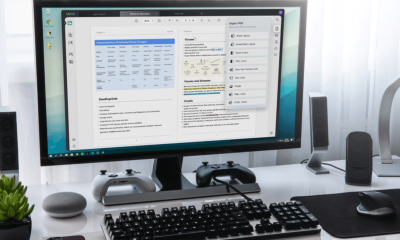Investing
Cadence lifts full year forecast, but shares drop on short-term outlook

© Reuters. The logo of Cadence Design Systems is pictured outside the company’s offices in San Jose, California, U.S., January 31, 2020. REUTERS/Stephen Nellis
By Tanya Jain and Stephen Nellis
(Reuters) -Cadence Design Systems Inc on Monday raised its full-year revenue forecast to slightly above Wall Street estimates, as a surge in artificial intelligence (AI) innovation fueled demand for custom semiconductor design.
Demand for the software used to design chips has risen even amid a cyclical downturn for the industry as chipmakers and tech giants like Alphabet (NASDAQ:) rush to create their own semiconductors needed for AI processing.
But the company’s current quarter forecast had a midpoint slightly below analyst estimates, sending shares down 4.4% at $230.60 in after-hours trading.
Chip designers such as Nvidia (NASDAQ:), Arm and Advanced Micro Devices (NASDAQ:) also use Cadence’s design tools to develop semiconductors used in both handheld devices and servers that process data for AI.
Cadence forecast full-year revenue between $4.05 billion and $4.09 billion, largely above analysts’ average estimate of $4.06 billion, according to Refinitiv data. The company’s earlier estimate was for $4.03 billion to $4.07 billion.
It expects adjusted earnings per share for 2023 between $5.05 and $5.11, beating expectations of $5.03 per share.
Revenue stood at $976.6 million for the quarter ended June 30, above estimates of $974.9 million. But the company gave a revenue forecast of $995.5 million in the current quarter, below Refinitiv estimates of $1.01 billion.
Like its rival Synopsys (NASDAQ:) Inc , Cadence is hoping to benefit from AI in at least two ways: first, by providing tools to design chips for AI; and second, by adding AI into its own software to help in the complex process of designing chips.
Chief Executive Anirudh Devgan said one of the company’s large customers recently used its AI software to improve chip power efficiency. On a conference call with analysts, Devgan said more customers are adopting those AI tools.
“This is going to take some time, which is part of the natural process of trying and deploying” new technologies, Devgan said.
Read the full article here

-

 Side Hustles5 days ago
Side Hustles5 days ago5 Things That Could Significantly Impact Your Company in 2025
-

 Investing5 days ago
Investing5 days agoNFI Group surge after board reshaped with new appointments, chairperson By Investing.com
-

 Side Hustles6 days ago
Side Hustles6 days agoHow Failing 22 Times Paved the Way to My Success
-

 Passive Income4 days ago
Passive Income4 days ago3 Challenges Entrepreneurs Will Face in 2025
-

 Investing6 days ago
Investing6 days agoChinese hack of US telecoms compromised more firms than previously known, WSJ says By Reuters
-

 Investing6 days ago
Investing6 days agoApple Siri Settlement: Who Is Eligible for a Cash Payout
-

 Side Hustles6 days ago
Side Hustles6 days ago3 Strategies to Make Your Next Campaign Go Viral
-

 Make Money2 days ago
Make Money2 days ago10 Critical Questions to Ask Your Financial Advisor Now


















